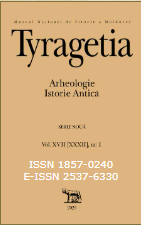Trapezes With Dorsal Flat Invasive Retouching: The Indicator of Neolithic Network Formation
Trapezes With Dorsal Flat Invasive Retouching: The Indicator of Neolithic Network Formation
Author(s): Valerij A. Manko, Guram ChkhatarashviliSubject(s): Archaeology, Prehistory
Published by: Muzeul Naţional de Istorie a Moldovei
Keywords: migrations; cultural exchange; neolithization; informational continuity; trapezoid with invasive dorsal retouching;
Summary/Abstract: The authors examine the history of the emergence and development of five ancient centers of the spread of the trapezoid dorsal invasive retouch technology. These centers were Sabi Abyad (Syria), Suluin Cave (Turkey, Antalya), Girzhevo (Ukraine, northwestern Black Sea region), Tashair sites (Ukraine, Crimea), Shomutepe culture sites (Georgia, Armenia, Azerbaijan, southern Caucasus). The spread of the new technology in the Northern Black Sea region was associated with the diffusion of small groups of the population of Antalya. The carriers of the technology left a small trace in the development of the stone industry in remote regions. Local autochthons adapted the new technology of producing geometric microliths to the technologies they had already mastered. The emergence of new forms of trapezoids in the Northern Black Sea region illustrates the mechanisms of innovation transfer associated with the Neolithic way of life in general. The technology of making trapezoids with dorsal invasive retouching spread from the Dniester to the Volga by the middle of the 6th millennium BC and reached the southern forest zone of Europe by the end of the 6th millennium BC. It is possible that the dispersal of small populations to the Northern Black Sea region was prepared by migration processes that occurred from the end of the Pleistocene.
Journal: Tyragetia (Serie Nouă)
- Issue Year: XVII/2023
- Issue No: 1
- Page Range: 103-111
- Page Count: 9
- Language: English

